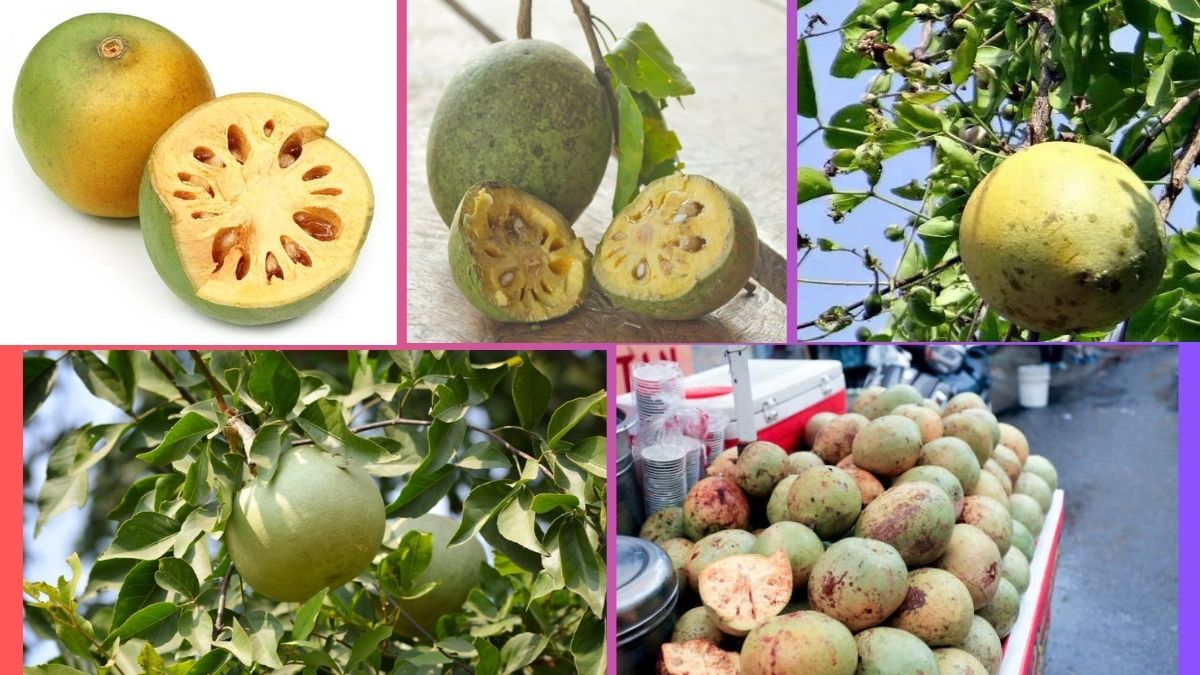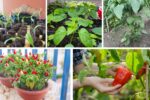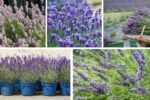The Bael fruit (Aegle marmelos), also known as wood apple, stone apple, or bilva, is a sacred and medicinal tree that has been revered for centuries in South and Southeast Asia. Recognized for its hard outer shell, fragrant pulp, and immense therapeutic properties, the bael tree holds a vital role in cultural, religious, and agricultural traditions.
Despite being lesser-known globally compared to tropical fruits like mangoes or bananas, bael is a powerhouse of nutrition and tradition — and one country stands above the rest as its leading global producer.
In this article, we’ll explore the fascinating world of bael: its history, uses, benefits, cultivation hotspots, and ultimately answer the question — Which country is the largest Bael producer globally?
What Is Bael?
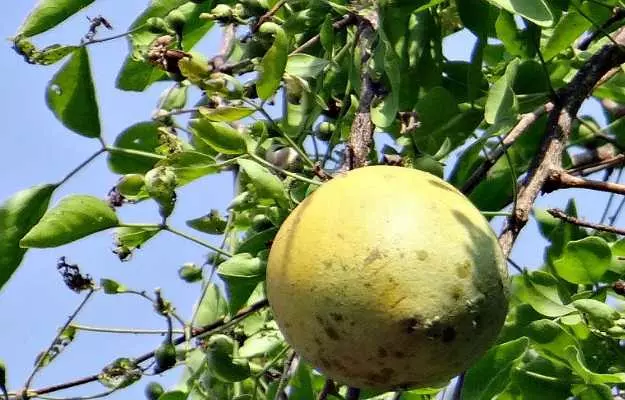
Bael (Aegle marmelos) is a slow-growing, medium-sized deciduous tree native to India and parts of Southeast Asia. The tree produces round or oval fruits with a tough woody rind and aromatic orange pulp filled with mucilaginous seeds. Bael is one of the few trees where every part — root, bark, leaf, fruit, and seed — is used in traditional medicine.
In Ayurveda and Siddha medicine, bael has been used for treating digestive disorders, diabetes, infections, and inflammation. The leaves are offered to Lord Shiva in Hindu rituals, while the fruit pulp is used to prepare refreshing summer beverages and herbal remedies.
Global Cultivation of Bael
Bael is primarily cultivated in the Indian subcontinent and nearby regions with tropical or subtropical climates. It grows well in dry, arid regions and is resilient to drought, making it an ideal fruit tree for semi-arid lands.
Major bael-producing countries include:
- India
- Nepal
- Sri Lanka
- Bangladesh
- Thailand
- Myanmar
- Indonesia
However, among these nations, India stands out as the largest bael producer globally — both in terms of cultivation area and fruit yield.
India: The World Leader in Bael Production
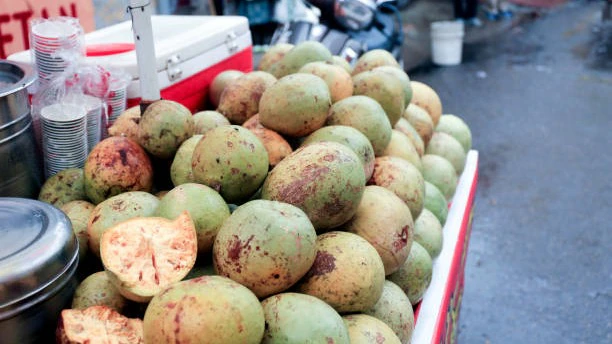
India not only reveres bael for its spiritual and medicinal significance but also leads the world in its cultivation and production. Let’s explore why India is the undisputed champion of bael production.
Climate and Geography
Bael is found across several Indian states, especially in:
- Uttar Pradesh
- Bihar
- Jharkhand
- Chhattisgarh
- Odisha
- Rajasthan
- Madhya Pradesh
- Tamil Nadu
These regions offer semi-arid to subtropical climates, with well-drained loamy soils that suit bael cultivation. The tree can withstand droughts and poor soil fertility, making it ideal for India’s vast drylands.
Production Data
While bael production is still considered minor compared to other fruits, India cultivates over 20,000 hectares of bael annually and produces more than 50,000 metric tons of fruit per year, based on data from the Indian Council of Agricultural Research (ICAR) and state horticulture departments.
As awareness grows about bael’s health benefits, India’s bael cultivation is expanding, especially under government-supported herbal and medicinal plant missions.
Institutional Support
India has multiple agricultural research centers promoting bael farming:
- Central Institute of Subtropical Horticulture (CISH), Lucknow
- National Medicinal Plants Board (NMPB)
- Krishi Vigyan Kendras (KVKs)
These institutions provide improved bael cultivars (like ‘Narendra Bael-5’ and ‘NB-9’), pest management strategies, and post-harvest technologies to boost production and profitability.
Domestic and Export Markets
Bael fruits are widely consumed in India in the form of:
- Bael sherbet (summer beverage)
- Bael candy
- Bael powder
- Medicinal decoctions and tonics
While most of the bael produced is consumed domestically, India also exports bael pulp, powder, and dried slices to countries like the USA, UAE, UK, Germany, and Sri Lanka, where there’s a growing demand for Ayurvedic products.
How Other Countries Compare

Although bael is native to several Asian nations, their production scale remains much smaller than India’s.
| Country | Estimated Bael Production | Remarks |
|---|---|---|
| India | 50,000+ MT | Largest producer globally |
| Nepal | ~2,000 MT | Cultivated in Terai and hill regions |
| Sri Lanka | ~1,500 MT | Mostly used in traditional medicine |
| Bangladesh | ~1,200 MT | Grown in north-central and western districts |
| Thailand | ~1,000 MT | Used in teas and herbal drinks |
| Myanmar | Limited | Local consumption only |
| Indonesia | Minimal | Wild and homegrown trees |
Clearly, India accounts for over 80–90% of global bael production, making it the leading producer by far.
Culinary and Traditional Uses
Bael fruit offers a wide range of uses in culinary, cultural, and medicinal contexts.
Popular Preparations:
- Bael Sharbat: A cooling drink made by blending bael pulp with water, jaggery, and lemon juice.
- Bael Murabba: Sweetened preserve used as a digestive.
- Bael Chutney and Jam: Used as condiments in rural areas.
- Dried Bael Slices: Brewed as a herbal tea to aid digestion.
- Bael Candy: Made from concentrated pulp and sugar.
- Medicinal Tonics: Used in treating diarrhea, IBS, and ulcers in Ayurveda.
Nutritional and Medicinal Benefits
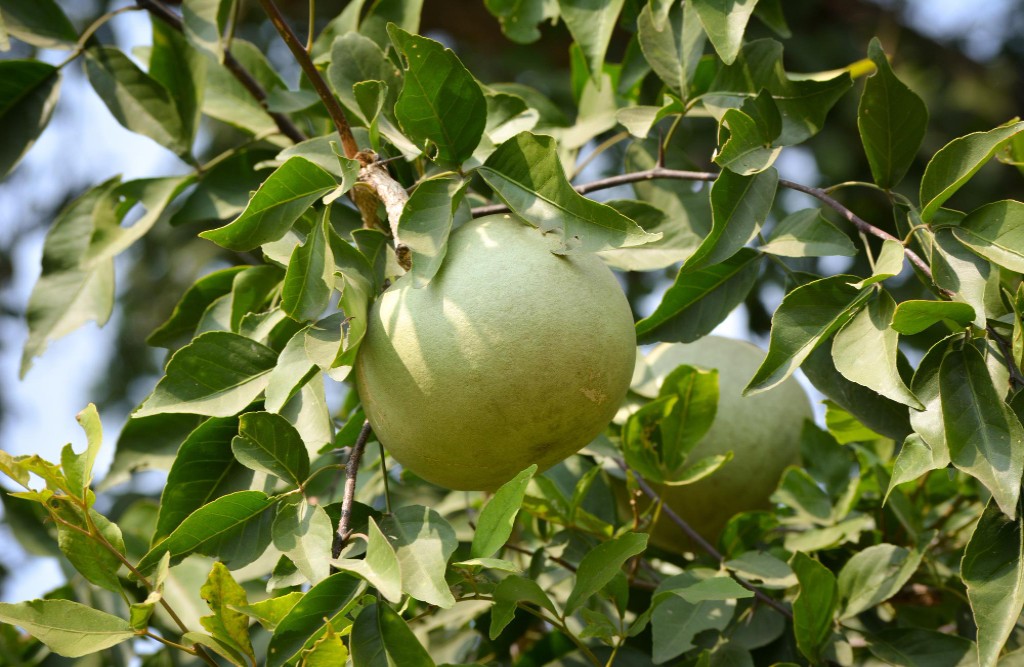
Bael is considered a functional food due to its dense nutrition and phytochemical content.
| Nutrient | Amount (per 100g pulp) |
|---|---|
| Energy | ~130 kcal |
| Vitamin C | ~8 mg |
| Fiber | ~2.9 g |
| Calcium | ~85 mg |
| Tannins & Lignins | Present |
Health Benefits:
- Improves digestion: Acts as a natural laxative and anti-diarrheal.
- Anti-inflammatory: Reduces internal inflammation and pain.
- Controls diabetes: Leaf and fruit extracts help regulate blood sugar.
- Boosts immunity: Rich in antioxidants and vitamin C.
- Liver protection: Used in liver tonic formulations in Ayurveda.
Challenges in Bael Production
Despite its potential, bael farming faces several challenges:
- Lack of commercial awareness: Still seen as a “wild” or “spiritual” plant rather than a commercial crop.
- Post-harvest losses: The hard shell makes it tough to process; pulp extraction is labor-intensive.
- Limited market access: Few organized channels for bulk selling or export.
- Underdeveloped processing industry: Most bael is sold fresh or used at home with little value addition.
Government support and awareness campaigns are beginning to change this scenario, slowly modernizing bael farming.
Future of Bael in Global Markets
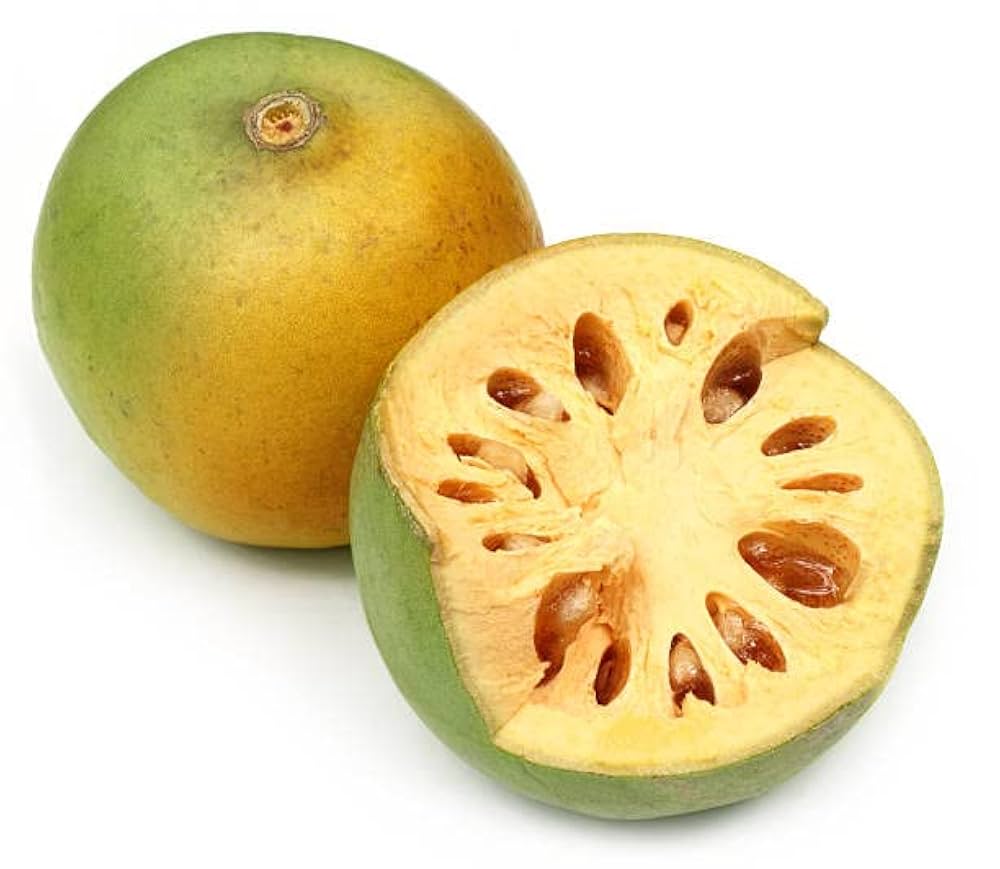
As demand grows for Ayurvedic and natural health products, bael is gaining attention in wellness-focused markets around the world.
India is exploring opportunities to:
- Expand bael exports (pulp, powder, extracts)
- Promote bael-based health supplements
- Incorporate bael into functional beverages
- Develop value-added bael products like bael kombucha, herbal teas, and nutritional bars
Research and innovation in agri-processing, e-commerce, and nutraceuticals will help India strengthen its hold as the global leader in bael production.
Conclusion
So, which country is the largest bael producer globally?
The answer is loud and clear — India.
With its vast growing regions, cultural reverence, scientific research, and increasing demand for herbal and wellness products, India leads the world in cultivating and utilizing the incredible bael fruit.
As modern health trends catch up with traditional wisdom, bael is poised to become a global symbol of holistic nutrition — with India at its heart.
